Star Wars and a New Community
“Use the Force, Luke.”
The diagnostics of Luke Skywalker’s X-Wing whirl and beep as he caroms down the Death Star trench. The voice of Obi-Wan Kenobi implores him to rely on his limited training in the ways of a Jedi to strike the Empire’s super weapon its fatal blow.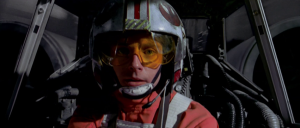
“Let go.”
It’s not going to be just like bulls eyeing Womp Rats in Beggar’s Canyon. Any piloting skills he inherited from his father are no match for that mysterious TIE Fighter behind him. He must put aside his cocky self-assurance and stretch out his feelings to guide his snubfighter’s proton torpedoes into the 3 meter wide exhaust port.
“The Force is strong with this one.”
He had seen his friend, Biggs, trained at the Imperial Academy and the best pilot he knew, go down at the hands of this TIE pilot now bearing down on him. He had to believe what Obi-Wan was telling him was the only way to succeed.
“Luke, trust me.”
Now he was sure Obi-Wan was helping him again. He hadn’t been sure if it had been old Ben calling out for him to run in the hangar as crimson laser bolts flashed around him, but he knew now. Obi-Wan had never steered him wrong in the limited time they spent together and he was certain, just like back on Tatooine, that he could trust this sage, old Jedi Knight.
The story of Star Wars has been interpreted every which way since its inception in 1977. As the new movies debuted, both old trilogy and new, the focus has shifted on who or what the Star Wars saga is actually about. Was it about good and evil; Jedi and Sith; or was it about Anakin Skywalker and his rise, fall, and ultimate redemption; or was it about something more spiritual and mythological?
All of these questions can be answered “yes” to varying degrees and certainly once he had traction aka box office success, George Lucas was able to tell a bigger story than his Flash Gordon inspired labor of love. But at the essence of the original movie that debuted to the delight of movie goers around the world, Star Wars is about Luke Skywalker and his hero’s journey from a brash, eager youth to the redemptive hero of good’s triumph over evil.
The archetype of “The Hero” who is youthful, brave, and thrust into adventure despite his own initial misgivings is depicted in the works of Joseph Campbell, a mythologist and comparative religions writer from whom Lucas borrowed liberally. In fact, Campbell would eventually speak of Lucas as his best pupil.
Basing his work on Carl Jung’s theories on the structure of the human psyche, Campbell established common story and character archetypes for the myths of many ancient and modern cultures. He called this the “Monomyth” or a theory that viewed all variations of mythic narratives as pointing to one big mythic story. While Christians would call this one big story the Gospel, or the cosmic story of what God is doing in the world, Campbell and Lucas were not inherently speaking in spiritual terms but in psychological and narrative terms.
Luke, when we first meet him, is only a farm boy on a backwater planet. His Uncle Owen and Aunt Beru are his caretakers and his parentage and past are an unsaid mystery; another aspect of Campbell’s Hero archetype. He is not totally unhappy but he is largely unsatisfied and bored with his routine life tending to moisture vaporators. In deleted scenes, Luke laments his inability to leave to train as a pilot and his envy for his friend Biggs finding “new friends” amongst the Rebellion against the Empire. There is a longing for something greater and for something he believes in.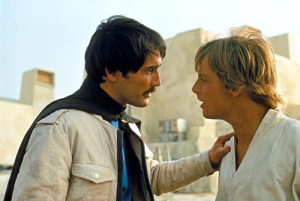
“He’s got too much of his father in him,” Luke’s aunt says to Uncle Owen after he and Luke get into a tenuous exchange about leaving. “That’s what worries me,” retorts Owen. What seems to be an innocuous statement about Luke’s adventurous ambitions will hold much more significance in later movies, but holds immediate significance when Luke meets the custodian of his past and future, Obi-Wan Kenobi.
Serving in a mentor role, Kenobi will help Luke take his first steps into a larger world. Revealing both his past as the son of a Jedi Knight and ushering in his future to fight for the Rebellion and wield his father’s lightsaber. Obi-Wan compels our fledgling hero to tap into his courage and belief in good when they are captured aboard the Millennium Falcon and binds Luke to rescuing Princess Leia. Kenobi’s sacrifice of his own life at the hands of Darth Vader, as well, will further Luke’s heroic journey. He is like every good mentor we have ever had in our lives. They give of themselves in wisdom, loving instruction, and sacrifice to see us excel, grow, and eventually fulfill our purpose. “Greater love has no one than this: to lay down one’s life for one’s friends,” (John 15:13).
Which leads us back to those final moments of this classic space epic. Trusting what he has been taught by his mentor, this hick from the backwater “hunk of nothing” relies on Ben’s “hokey religion” to guide the torpedoes home and blow up the Death Star.
However, it doesn’t change the fact that the personification of evil, Darth Vader, the sinister villain who had struck down his only remaining connection to home and family was still on his tail. “I have you now,” crows the dark lord as his targeting computer locks on to another unfortunate target and the last hope for the Rebels (*spoiler alert* unbeknownst to him and us his own son). This line should spell the doom of the Jedi, the Rebellion, and Luke’s rise in the Hero’s journey. But one whoop from an old pirate will dispel all of that and shed new light on where Lucas’ story differs from that of “The Hero” archetype.
“You’re all clear kid, now let’s blow this thing and go home!”
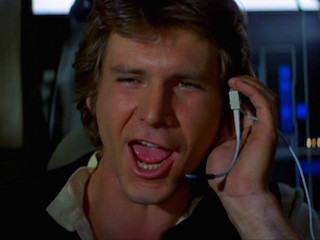 Yells the self absorbed, first-shooting, smuggler Han Solo as Darth Vader’s TIE spirals out of control and leaves Luke a clean shot. That moment crystalizes Luke’s story as a larger story about a group of friends fighting for the greater good. What started as Luke’s journey off Tatooine has now expanded to include a slimy, no-good swindler, a walking carpet, two droids, and an Alderaanian princess. Star Wars, as a standalone movie and as a franchise, exemplifies the need for community and the role of community in accomplishing a mission.
Yells the self absorbed, first-shooting, smuggler Han Solo as Darth Vader’s TIE spirals out of control and leaves Luke a clean shot. That moment crystalizes Luke’s story as a larger story about a group of friends fighting for the greater good. What started as Luke’s journey off Tatooine has now expanded to include a slimy, no-good swindler, a walking carpet, two droids, and an Alderaanian princess. Star Wars, as a standalone movie and as a franchise, exemplifies the need for community and the role of community in accomplishing a mission.
There is always the temptation for us to go it alone. To view our lives through the myopic lens of our own self-actualization and destiny. A surface level viewing of Star Wars will reinforce this individualistic mindset. Consider it strange, then, that story and cultural myth, as well as religious storytelling, is formed and reinforced in community. Even if a story is largely created by one person, like modern fictional novels, they are never experienced outside of a collective that buys, discusses, and analyzes those stories. Any Star Wars fan can attest to the communal nature of a galaxy far, far, away.
Likewise, in Luke’s story, we’re tempted to focus solely on Luke Skywalker himself; heck, I just described Episode IV as “Luke’s Story”. However, the need for community, especially for one as cutoff from emotional attachments as Luke has been throughout the movie after losing the couple who raised him and his mentor, is satisfied in the fast bonds he forms with Han Solo and Princess Leia Organa. Even R2-D2 and C-3PO form an unlikely friendship with all of them and at different points they all save each others lives. Without each other they never would have eluded capture multiple times, nor would they have secured the plans to the Death Star that they so desperately were trying to deliver safely to the Rebel Alliance.
And the ultimate end game of delivering the plans, to see evil defeated and righteousness triumph over the Empire by finding the Death Star’s weakness, is accomplished through their combined efforts. Luke might be the hero but without his friends to bail him out he would not have lived to hear Obi-Wan’s reassurance after the Death Star explodes.
“The Force will be with you, always.”
The movie doesn’t end with that reassurance, but with a triumphant ceremony celebrating the Rebel Alliance’s monumental victory. And who receives medals? Not just our hero but his companions are all on the stage. Solo and Chewbacca receiving Medals of Bravery for clearing Luke’s way and Luke for taking the fateful shot. They receive the medal from fellow friend, Princess Leia, to the joy of a freshly repaired and oil bathed R2-D2 and C-3PO. A community on mission that has seen their mission accomplished and the Empire dealt a severe blow. Only time and further movies would confirm that Star Wars wasn’t just about Luke and his heroic arc, but also about a group of heroes fighting together to bring back peace and justice to the galaxy.
A quick note. While I used tons of different sources for this and the future articles in the Star Wars review series, I am indebted to James Harleman at Cinemagogue for his article series on Star Wars and to John C. McDowell’s book The Gospel According to Star Wars. Check both of them out and you will not be disappointed.


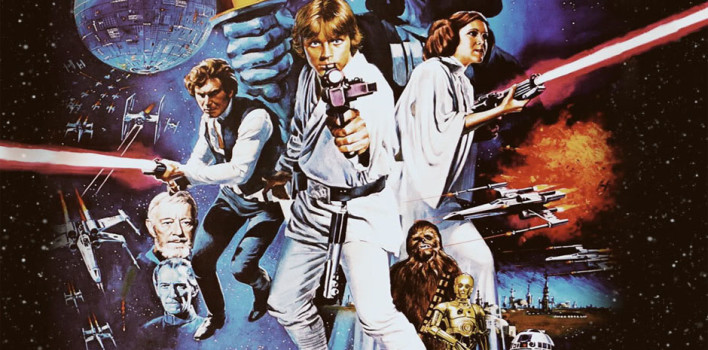
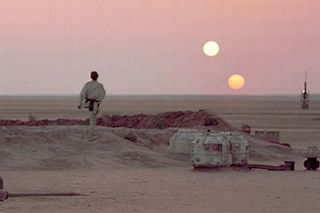
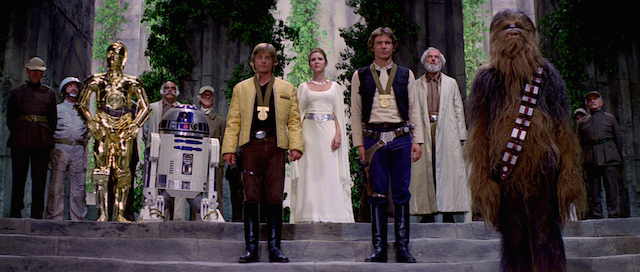
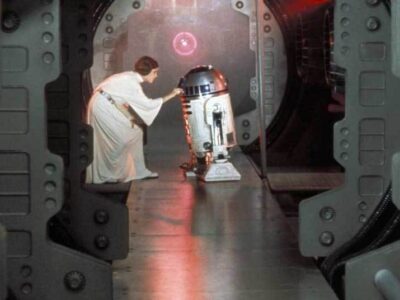
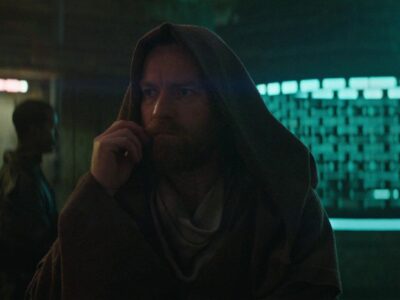
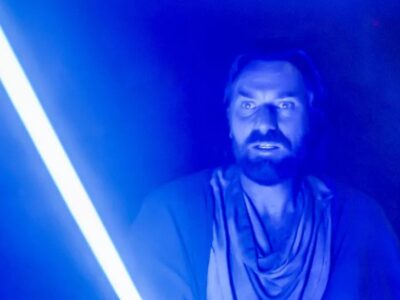


Pingback: A Theology of the Force – Part 1 | Reel World Theology
Pingback: A Theology of the Force – Part 2 | Reel World Theology